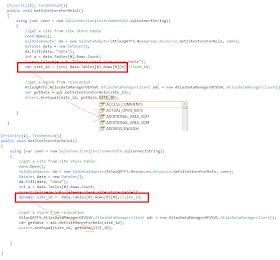I am working on another project and haven’t
touched Oracle SQL Developer for some months. Today when I double clicked sqldeveloper.exe
and tried to open it, it showed the following error:
The program can’t start because MSVCR71.dll is
missing from your computer. Try reinstalling the program to fix this problem.
After looking into this issue, it is easy to
fix it.
Go to Registry Key (regedit)
Go to
HKEY_LOCAL_MACHINE\SOFTWARE\Microsoft\Windows\CurrentVersion\App Paths\ sqldeveloper.exe
If you don’t see sqldeveloper.exe, create a new
key.
Create a new string and then point to the file
location - C:\RayLin\sqldeveloper-3.2.20.09.87\sqldeveloper\jdk\jre\bin
Double click sqldeveloper.exe again and
you are all set.









